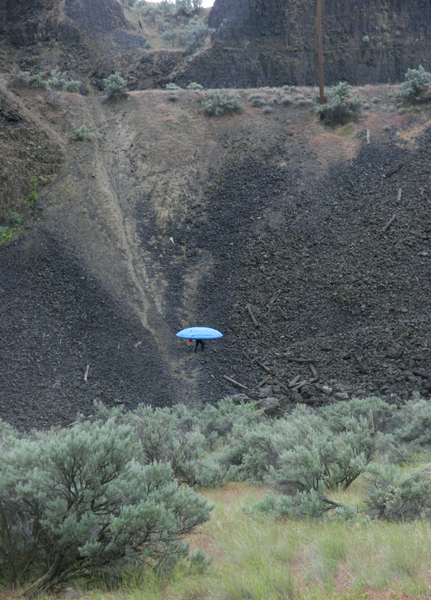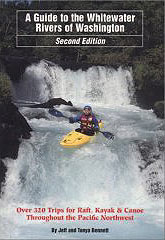
By David Chatham
Photos by David Chatham, Don Matteson, and Mojgan Arashvand
We had originally planned to have a trip consisting of a raft and two IK’s, but one look at the take out hike quickly narrowed our team down to the two IK’ers. We did take the time to carefully scout the takeout, because if you miss the take out a massive waterfall waits just downstream. The rest of the team was gracious enough to run the shuttle for us ( or wait while the shuttle was run ), and we agreed to meet up later at the campsite on the Lochsa.
We tried to put in on river left just below the bridge described in Bennett, but we did not spot a clear path to the river, and ended up having to lower our boats through some brush to get started. From the river, it appeared that there might have been better access maybe forty yards downstream of the bridge ( on river left ).
After some flatwater paddling, we came to an area where the river divided in channels, and we could see some mist rising in the distance. We headed for river right and got out on an island separating the first and second channels. After scouting both of these, we opted to run the second channel as being more straightforward, though the first channel appeared runnable as well. I would estimate the line we took at Upper Palouse Falls to be between seventeen to eighteen feet tall.
The Author runs Upper Palouse Falls
Don Matteson below Upper Palouse Falls.
Shortly after these first falls, we ran the best rapid on the river ( II+/III- ) which had a hole that Don surfed briefly in. Not too much later, we arrived at Little Falls and eddied out on the left bank to scout. We ended up choosing to run off the far left, though, with more time to scout, other lines on the falls might be possible.
Don Matteson celebrates below Little Falls
Below Little Falls, the river was mainly flatwater, with some intermittent class II rapids. We did see a lot of wildlife highlighted by a light colored great horned owl and some mule deer. The canyon was fairly pretty, though approximately eight and a half of the eleven miles of the run were on flat or slowly moving water.
Don cruising typical rapids between the falls on the Palouse.
Even though we had a great day on the river, we opted not to try to shatter the world record and took out above the IV-V drop about a quarter mile above Palouse Falls. This drop appeared fairly straight forward, but the consequences of a swim or missing an eddy meant entering the gorge leading into the hundred and eighty-five foot waterfall. This made the decision not to do this last drop acceptable.
Looking down into the gorge leading up to the 185 falls. We didn't run the last rapid pictured in this photo because a mistake leaves little time to recover above the big one.
Big Palouse Falls, 185 feet, located just below the take out.
Don climbing out of the canyon at the take out for the Upper Palouse.
We had 1,400 cfs on the Internet Gauge 'Palouse at Hooper'.
This map shows the put-in at Hooper at the top of the map and the take-out, at the park above Big Palouse Falls park, the river is highlighted by the red dotted line.
For directions to the put-in and take-out, as well as other info, pick up the second edition of the bible, Jeff Bennetts 'A guide to the Whitewater Rivers of Washington', a book no serious Northwest paddler should be without. You can pick this book up at your local paddling shop, or on amazon.com.
Photo by Don Matteson
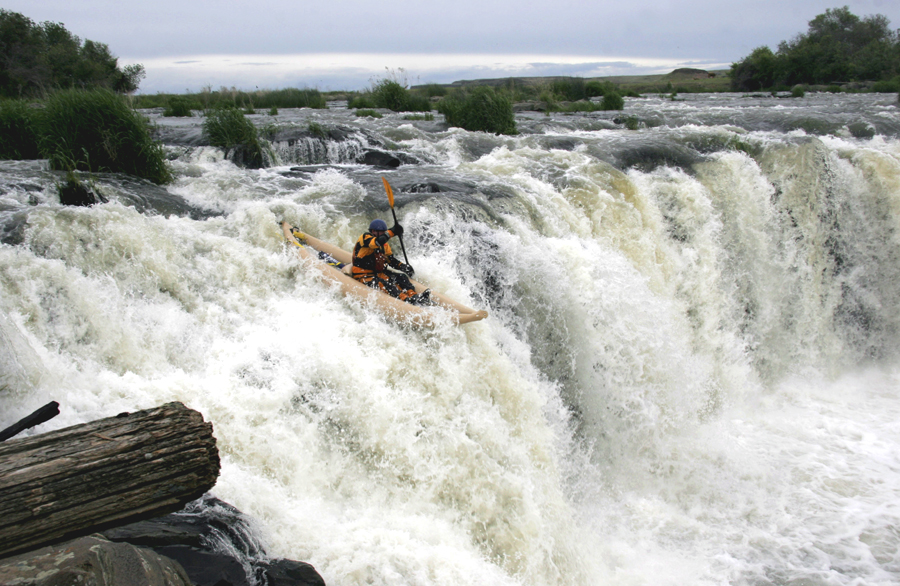
Photo by David Chatham
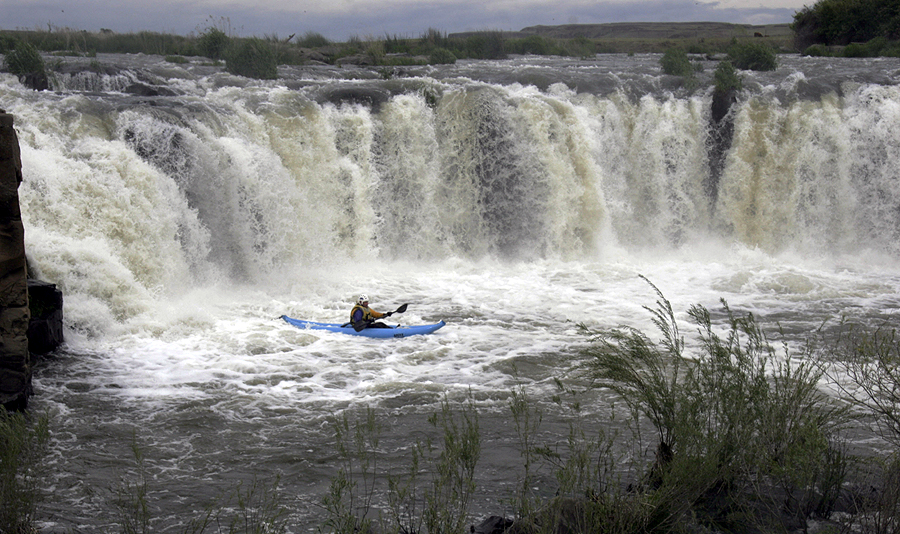
Photo by David Chatham
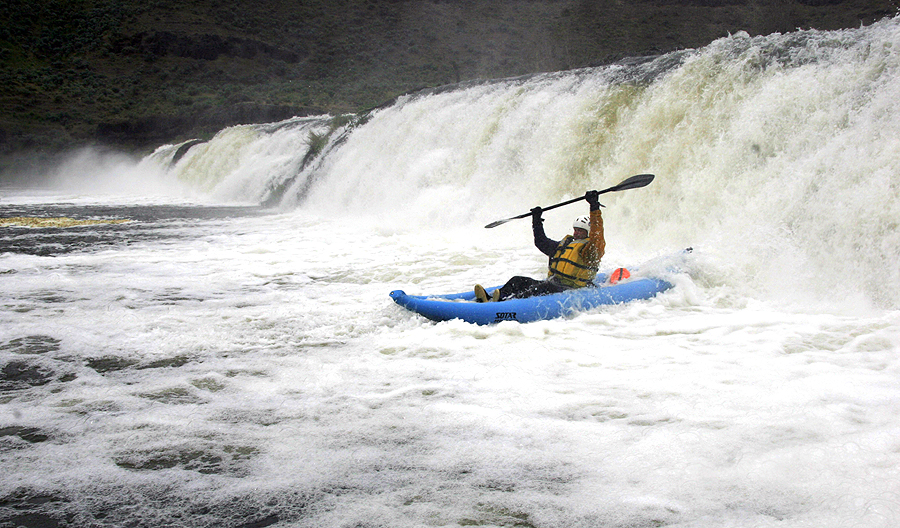
Photo by David Chatham

Photo by David Chatham
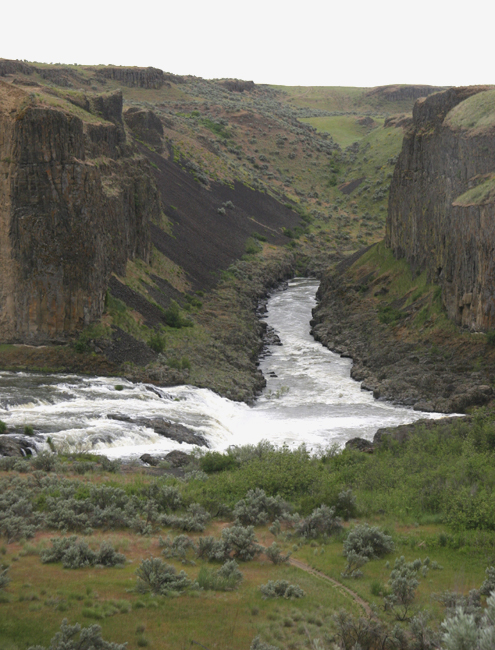
Photo by Mojgan Arashvand
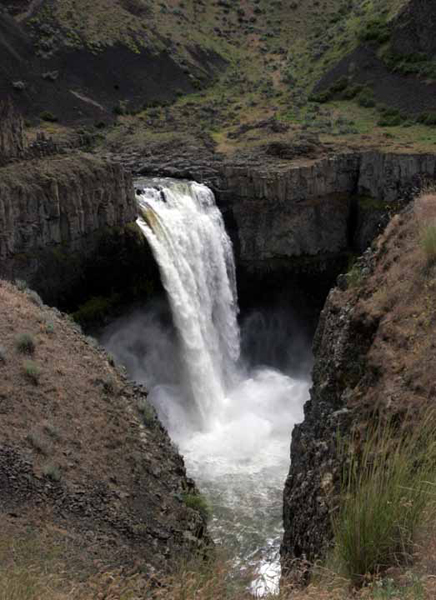
Photo by David Chatham
